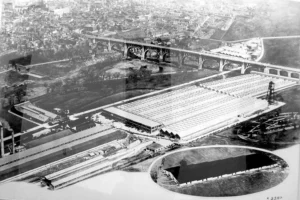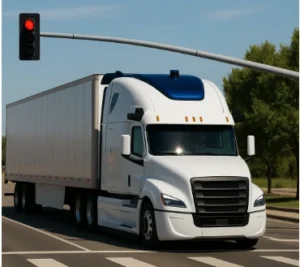The implementation of a new traffic signal system could be much closer than people think
Transportation is undergoing constant transformation as vehicles become smarter and more autonomous. This evolution also affects other technological aspects of the industry, such as traffic lights, which have been a method of control and safety for over a century.
Researchers are studying how to use features of modern cars, like GPS, to make traffic safer and more efficient. Although it sounds like an advancement for the transportation industry, this could lead to the extinction of traffic lights by handing control over to autonomous vehicles at some point. Henry Liu, a civil engineering professor leading a study at the University of Michigan, states that the implementation of a new traffic signal system could be much closer than people think, due to the rapid advancement of artificial intelligence.
The first municipal traffic control system in Cleveland was recorded in 1914, according to historian Megan Kate Nelson. Powered by the city’s trolley line electricity, it featured red and green lights, and with the help of a police officer sitting in a sidewalk booth, the switch for light change was operated. By 1930, all major US cities and many smaller ones had at least one electric traffic signal. Since then, traffic lights haven’t changed much in the United States over the years.

Automated vehicles and potential changes in road technology
The arrival of connected and automated vehicles has opened up new possibilities for traffic lights. Ali Hajbabaie and his team at North Carolina State University propose adding a fourth signal, possibly white, to indicate when there are enough autonomous vehicles on the road to take control. Though the specific color isn’t crucial, according to Hajbabaie, current lights could be modified to flash red and green simultaneously, signaling that autonomous vehicles are in charge. This approach, which would take years to implement, would require between 40% and 50% of vehicles in circulation to be autonomous.
The University of Michigan is exploring a different approach, using data from General Motors vehicles to adjust the timing of traffic lights in the Detroit suburb of Birmingham. This research, focused on human-driven vehicles, could be closer to widespread implementation. It shows that even with just 6% of vehicles connected to the GM system, traffic lights can be adjusted to improve traffic flow.
Michigan’s approach avoids costly infrastructure upgrades by using data from automakers instead of relying on roadside sensors. Danielle Deneau, from the Oakland County Road Commission, notes that adjusting traffic lights by just a few seconds can reduce congestion, and the newly funded research could introduce even greater changes.

TRUCKING – Look at how far we’ve come in the last 100 years
The evolution of the trucking industry in the last 100 years: from a new way of transportation to technological innovation. Trucking in the 1920s: The

Results of Safe Driving Week: more than 2,500 fines and warnings
Operation Safe Driving Week 2025 concluded with a total of 8,739 vehicles stopped. Operation Safe Driver Week 2025 concluded with a significant overview of road

USDOT Withholds $40 Million from California Over English Proficiency “Rule Rebellion”
The U.S. Department of Transportation (USDOT) has announced that it will withhold more than $40 million in federal highway safety funds from California for failing to enforce national English Language Proficiency (ELP) standards for commercial truck drivers.

ICE operation detains 120 drivers along the I-40
A three-day ICE operation along the I-40 led to the detention of 120 drivers for immigration-related violations. A three-day operation along Interstate 40 in western

October’s bankruptcy spike: 5 carriers file for Chapter 11 in just two weeks
During the first half of October five transportation-related companies filed for bankruptcy under Chapter 11. The transportation industry has gone through difficult months, but October

Could It Happen with Trucks? Tesla Investigation Reopens the Debate on Autonomous Freight Safety
Could It Happen with Trucks? Tesla Investigation Reopens the Debate on Autonomous Freight Safety
